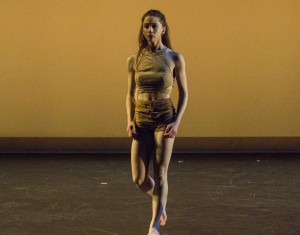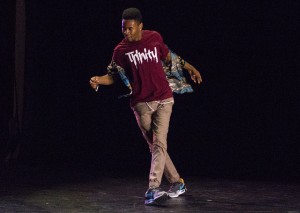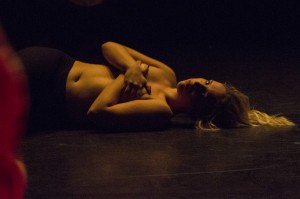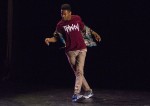WACSmash, an annual dance showcase held at the Kaufman Hall Dance Theater, will feature interdisciplinary dance works highlighting the UCLA dance community this weekend. Daily Bruin A&E features three fourth-year students who discuss the role of dance both in the show and in students’ daily lives.

Nikki Friedman
Producing a WACSmash show has been on Nikki Friedman’s bucket list since she began dancing at UCLA.
Friedman looked up to the confident dancers she saw practicing in the studios. She worked hard to vary her own style, and after a few months, ended up dancing in her first WACSmash performance.
Friedman, now a fourth-year dance and psychology student, looked to WACSmash as an important milestone by which to evaluate herself every year. This year, she is not only presenting her contemporary piece, “Jellyfish,” but is also one of the show’s three producers, coordinating everything from auditions to funding to musicians.
Friedman, who interviewed for the position of producer at the end of last year, said the three producers applied for grants and initiated a Kickstarter campaign to fundraise for advertising and a space to perform.
Friedman noticed during auditions that not only dance students expressed interest in performing in the show. Political science and geography students also turned up to audition, making her realize the dance community was bigger than she had initially thought.
Friedman said she wants every student who attends or performs in the show to feel welcome in celebrating dance, an art form that she feels transcends background. For Friedman, WACSmash is the result of years of effort and exploring her style to find a sense of individuality through dance.
“(The show) is here, and I’m probably not going to be sleeping for the next couple of days,” Friedman said. “But I’ve found my own voice with this show and am grateful that I’ve been able to make a difference.”

Gbari Gilliam
Gbari Gilliam used to take a month to choreograph 30 seconds of movements and concepts.
Gilliam, a fourth-year dance student, now feels comfortable improvising and choreographing pieces on the spot. He said his years at UCLA have given him the confidence to express his emotions freely through his preferred genre of hip-hop.
Gilliam choreographed a full-length piece called “Disconnect/Reconnect,” featuring him and eight other dancers, which will close this year’s WACSmash. The piece explores people’s dependence on technology and calls for a break from the modern obsession with smartphones and other devices.
Gilliam, who initially looked to YouTube for ideas, later gathered inspiration from his classmates’ discussion of real-life social issues in their choreography. In their classes, students often submitted choreography discussing issues of campus climate, race and inequality.
“Dancers are very aware and very in-tune with what’s going on around the world,” Gilliam said. “They see issues, and they’re very inspired to move to those ideas – dancers know what’s happening.”
For Gilliam, dance is a way to reach and include students who may not appreciate the subtleties of technique, but can still relate to a call for action in society.
“Dance isn’t one-dimensional,” Gilliam said. “All these dance forms are coming together so we can see they’re all amazing and beautiful in their own different ways.”

Alexsa Durrans
Alexsa Durrans quit soccer to be less like her siblings and began ballet lessons to be more like herself.
Durrans began dancing in eighth grade to find an activity that better suited her than organized sports. Dance began as a way to establish her own identity, but grew into an outlet for choreography and expression.
When she arrived at UCLA, Durrans, now a fourth-year dance student, moved away from ballet and began experimenting with modern dance. The shift was initially jarring – Durrans was used to the codified rules of ballet, which follow a strict tradition passed down from teacher to student.
Modern dance, however, opened up new avenues for expression because of its emphasis on openness and fluidity. Dance, for Durrans, became more personalized and allowed her to present an external picture that reflected her internal emotions.
She soon gained an appreciation of dance’s power to reflect non-dancers’ emotions as well. Durrans believes dance is universal both in message and content and serves as a medium for people with different ideas, beliefs and values to express themselves.
“Everyone has a body, and everyone moves their bodies, but for some reason there’s a delineation between dance and other people,” Durrans said. “Dance connects to everything.”
